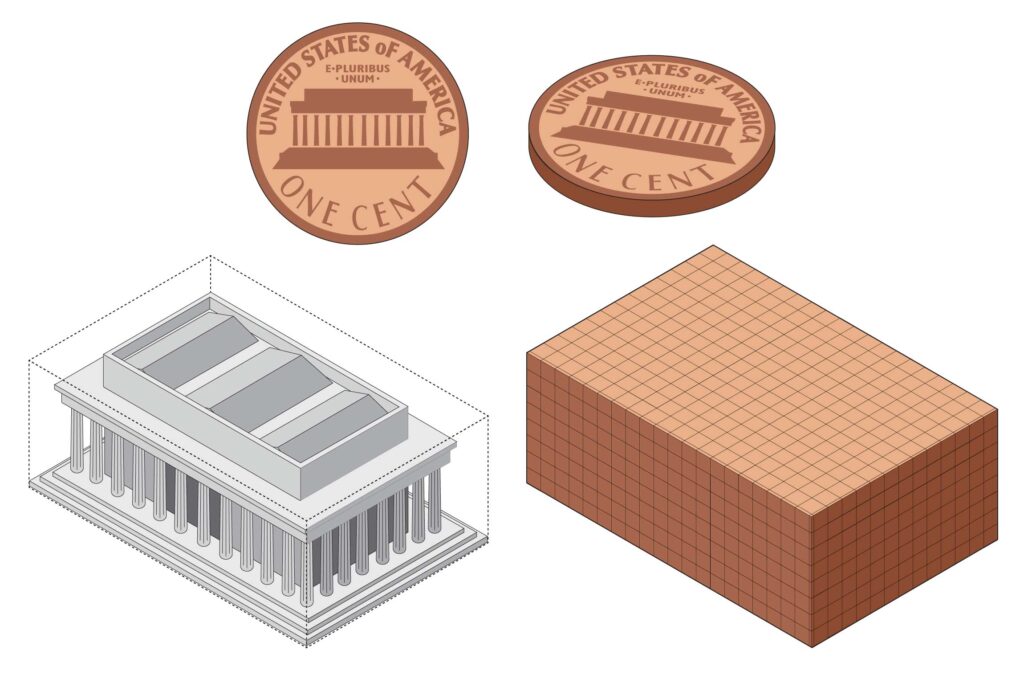More than 300 billion pennies are circulating right now, according to a June estimate from a Treasury spokeswoman, yet the coins are largely absent from pockets, purses and pop culture.
Penny candy and penny arcades haven’t been around for decades, and “a penny for your thoughts” seems borderline insulting. No famous rapper is named 1 Cent.
More than 300 billion pennies are circulating right now, according to a June estimate from a Treasury spokeswoman, yet the coins are largely absent from pockets, purses and pop culture.
Penny candy and penny arcades haven’t been around for decades, and “a penny for your thoughts” seems borderline insulting. No famous rapper is named 1 Cent.
In fact, pennies are so passé that two-thirds of those released in recent decades almost immediately went out of circulation because we didn’t bother spending them, according to a report by the Congressional Research Service.
In February, the issue caught the attention of President Donald Trump, who told the Treasury Department not to order new pennies for 2026. That means the 2025 batch of 1.27 billion could be the last ones ever put into circulation.
Like the half-cent coin killed off in 1857, the penny — thanks to inflation over the centuries — probably has outlived its usefulness.
For sure, it has long outlived its cost effectiveness.
The United States began producing 1-cent coins out of solid copper in 1793, and the economics became challenging not long afterward.
By the time President Theodore Roosevelt ordered President Abraham Lincoln’s image on the penny in 1909 — the first U.S. coin to feature a real person — the Mint had been cutting costs by mixing in other metals for more than 50 years. The Mint overhauled its penny recipe most recently in 1982 after a spike in copper prices, and pennies are now mostly zinc.
But even cheap metal wasn’t enough to keep the penny in the black.
In 2006, the penny again hit an unfortunate milestone: It cost more to make than its face value, a condition known as “negative seigniorage.”
And the gap continues to grow. As of 2024, each penny cost nearly 4 cents to produce, and the U.S. Mint lost more than $85 million on pennies last year.
This cost disparity is not breaking news. Legislators have tried to scrap the penny for decades, and a new bipartisan bill to officially eliminate them was introduced in April.
Nothing for now.
Only Congress has the power to officially take a coin out of circulation, so two-plus centuries of pennies still will be perfectly spendable until that happens and probably well beyond, based on the experience of our northern neighbors.
Canada stopped making its pennies in 2012 and pulled most of them out of circulation in 2013, but Canadian pennies are still legal tender if you happen to have some stashed away.
Turns out, it takes a while to empty all the piggy banks, junk drawers and take-a-penny trays in an entire country.
If you fed 300 billion pennies through a single grocery store Coinstar machine, it would take more than 950 years to process. If you used all 18,000-plus Coinstar machines in the United States, it still would take more than 15 days, the company’s CEO, Kevin McColly, said.
And they won’t just wear out. The typical lifespan of any coin is about 30 years, so no need to pinch your pennies at the moment.
Next year, though? You may be able to get “Pennies From Heaven,” but you won’t get them from the Mint.
Statue of Liberty and Lincoln Memorial statistics came from the National Park Service.
The post 300 billion reasons the penny won’t be dead for a while
appeared first on Washington Post.




